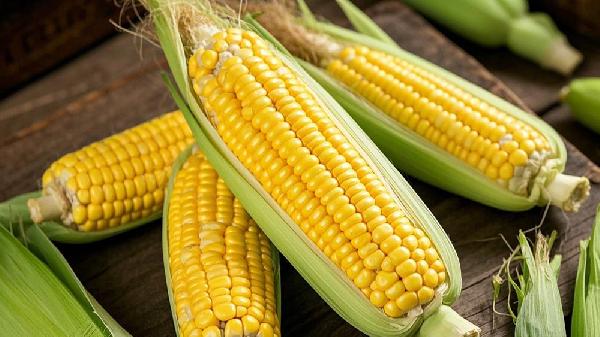The main storage methods for fresh corn include refrigerated storage, frozen storage, air drying storage, vacuum storage, and cooked storage.

1. Refrigerate storage
Keep fresh corn with 2-3 layers of outer skin, wrap it with cling film, and place it in the refrigerator compartment. The refrigeration temperature should be controlled at around 4 degrees Celsius and can be stored for 3-5 days. Be careful not to clean the corn, as moisture can accelerate spoilage. Refrigerated storage can maximize the freshness and taste of corn, making it suitable for short-term consumption.
2. Cryopreservation
Peel off the outer skin and whiskers of corn, wash it, and dry it dry. Put the whole piece or section into a sealed bag, exhaust the air, and place it in the freezer. Freezing storage can last for 2-3 months, and the taste is slightly softer after thawing. Blanch for 1 minute before freezing to better maintain sweetness and texture. This method is suitable for long-term preservation of large quantities of corn.
3. Air drying and preservation
After peeling the corn, hang it in a ventilated and dry place to air dry. After complete dehydration, put it into a breathable container. Dried corn can be stored for more than six months and needs to be soaked and restored before consumption. This method will change the taste of corn, but it can maximize its shelf life. Be careful to avoid damp environments that may cause mold growth.

4. Vacuum preservation
Use a vacuum machine to vacuum seal the cleaned corn, and then refrigerate or freeze it. A vacuum environment can effectively isolate oxygen and inhibit bacterial growth. Refrigerated vacuum storage can last for 1-2 weeks, while frozen vacuum storage can last up to 6 months. This method has a higher cost but the best preservation effect.
5. Cook and store
After cooking the corn, let it cool and store it in a sealed container for 3-4 days. Cooking can inactivate some enzymes and delay spoilage. You can also peel off the cooked corn kernels and freeze them for easy use in subsequent cooking. This method may lose some nutrients, but it is convenient for immediate consumption. When storing fresh corn, pay attention to keeping it dry and clean, and avoid mixing it with other strongly scented foods. Different storage methods have their own advantages and disadvantages, and can be chosen according to actual needs. It is recommended to refrigerate for short-term storage, and freeze or air dry for long-term storage. Regardless of the method used, it is important to ensure that the corn is fresh, intact, and free from insect infestation and mold before storage. Reasonable storage can maximize the preservation of the nutritional value and flavor of corn, allowing you to enjoy delicious food at any time.









Comments (0)
Leave a Comment
No comments yet
Be the first to share your thoughts!